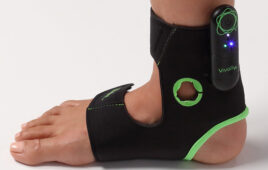
(Credit: Pixabay)
Before we know it, the washing instructions tag in our clothing might just say, “Warning: Garment susceptible to shock.”
According the article “Wearables in Healthcare Should Adopt Internet of Me Approach,” sensors are now being embedded into clothing for medical uses rather than just the usual vital sign tracking for athletics and weight loss.
Through this, scientists have made the message loud and clear: sensors are no longer just for medical devices and our wrists. Technologies like the Fit-Bit and Apple Watch, track the user’s running time and pulse, but advanced technology is enabling monitoring and real-time feedback for patients.
Specifically, companies are starting to integrate wearable technology into everyday clothing; shoes, shirts, even undergarments.
“Some companies are launching smart clothing and body sensors that look like normal everyday clothing,” Davide Vigano writes. “Sensors are embedded into the fabric and are not visible, making the garment like a computer. It’s a concept I like to call the Internet of Me (IoMe).”
Furthermore, Vigano explains that with these accessories, falls can be quickly reported with “smart sock” technology and other everyday garments. He also explains that it’s important to integrate sensors in everyday clothing so that patients will actually wear them. People don’t like to use technology that emphasizes them as a patient outside of the doctor’s office.
“Smart clothing” could also connect to an app that contains a virtual assistant and medical advice. Medical professionals could use this information to determine whether a patient is performing physical therapy exercises.
One company working on similar technology is BeBop, who places sensor strips on shoes, gloves, and even on a baby’s bed to monitor breathing. I’m sure other companies are following suit.
With this technology, companies hope to see an increase in healthcare quality and a reduction in visits to the doctor’s office. Another possible outcome is improved physician/patient engagement, according to Vigano.
“Wearable sensor have the potential to change the way in which physicians, patients, and the entire population view healthcare,” he says.
Who knows, maybe clothing will be able to save a life.




